Finland exported houses around the globe and in return received coal, butter and oranges
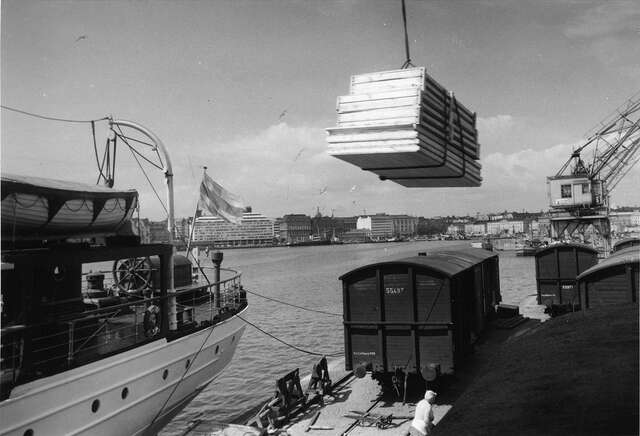
In the era of post-war reconstruction, Puutalo corporation became the largest export organisation for prefabricated wooden houses in the world. It produced homes for people on every inhabited continent. Finland’s exhibition ‘New Standards’ for the upcoming Biennale Architettura tells the remarkable story.
“The production of prefabricated houses in Finland evolved into a largescale industry only as late as World War II and the period following it. It has nevertheless delivered houses all over the globe in a volume equalling, for instance, the residential buildings in all cities of Finland put together.”
The claim made by the Puutalo corporation in a communications leaflet from May of 1949 sounds almost unbelievable. In fact, it took less than a decade for Puutalo to become the largest planning and selling organisation for prefabricated wooden houses in the world. By 1955, the corporation had delivered almost nine million square meters of buildings to every inhabited continent. The largest of these deliveries were sent to the Soviet Union, Germany, Poland, Israel and the United Kingdom, while dozens of other countries received buildings through public and private orders.
Given the tumultuous conditions of the war period, the extensive reach of this Finnish enterprise is surprising, but even more astonishing is the fact that the production of prefabricated wooden houses in Finland began almost from scratch in 1940.

From domestic reconstruction to large-scale export
In the spring of 1940, the largest players in the Finnish forest industry established the Puutalo corporation to accelerate the production of houses for the domestic market. The urgent need for housing was driven by refugees and others who had lost their homes as a result of the Russo-Finnish Winter War of 1939–1940. However, as the political situation evolved, the focus of the company shifted, and during the post-war years more than 95 % of production was directed toward export.
After the war, a chronic shortage of food, raw materials and machinery plagued recovery across Finland (food rations remained in place until 1954). And with a limited range of products for exchange, it was difficult to obtain goods from abroad. Materials that could be traded came almost entirely from the forest industry in the form of timber, paper and cellulose. But while commodities could be traded easily, prefabricated wooden houses added greater value to these raw materials, and so the building industry took on a significant role.
By the late 1940s, 5.5 % of all Finnish exports consisted of wooden buildings, so many that the industry began to gain privileged access to scarce products. In 1948, for instance, a shortage of hinges hampered builders across Finland, as almost all such hardware was reserved for wooden houses to be shipped abroad.
Panels and politics
The evolving geopolitical situation significantly affected this trade in wooden buildings. As relations between the Soviet Union and Western powers deteriorated, Finland sought to maintain its neutral stance with respect to global alliances. In this respect, the nation occupied a unique position in the political context of post-war Europe. Although it was under the influence of the Soviet Union, Finland remained a democracy with a market-based economy. As such, both superpowers sought to gain political influence over the country’s domestic, foreign and trade policies.
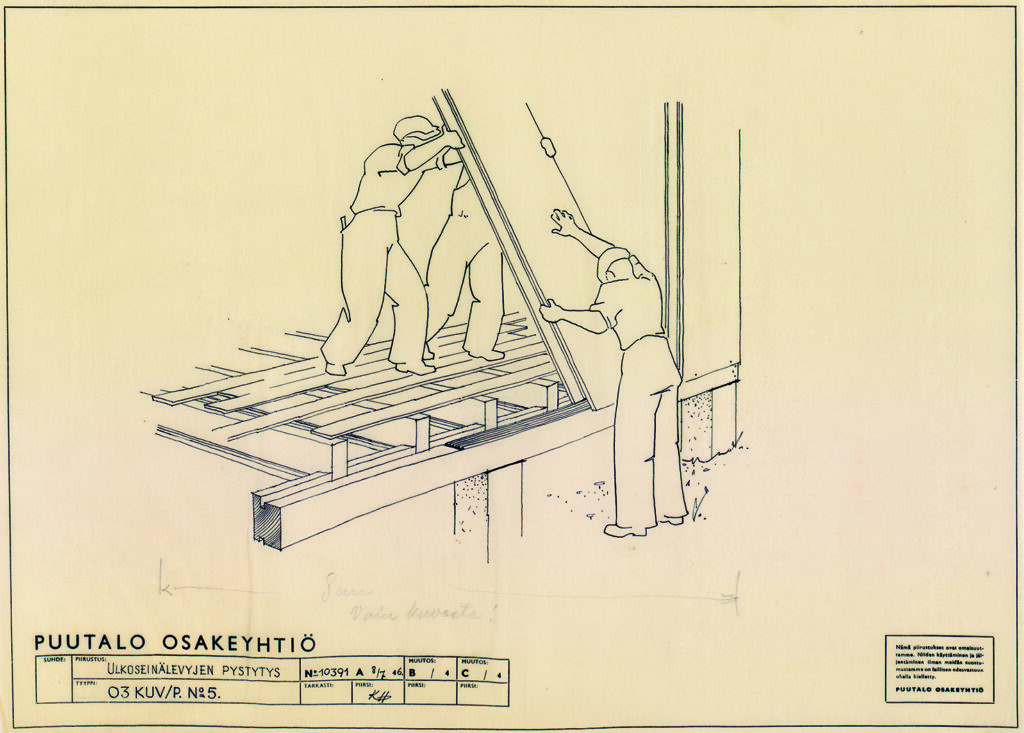
The strategic aim of the Soviet Union was to bind Finland in its sphere of influence through close trade relations. To do this, a series of bilateral deals were organised between the two governments in order to define total volumes of trade and products to be exchanged. Finland mainly exported goods from the forest and metal industries, while imports from the Soviet Union consisted mostly of oil, coal and different varieties of grain.
As an industry, wood construction became increasingly dependent on these exports to the Soviet Union. Between 1945 and 1955, about 90 % of Finland’s production of wooden houses was exported to its eastern neighbour. During this period more than 100,000 buildings were erected across the vast empire, from the Baltics to the Pacific and from the Arctic to Central Asia.
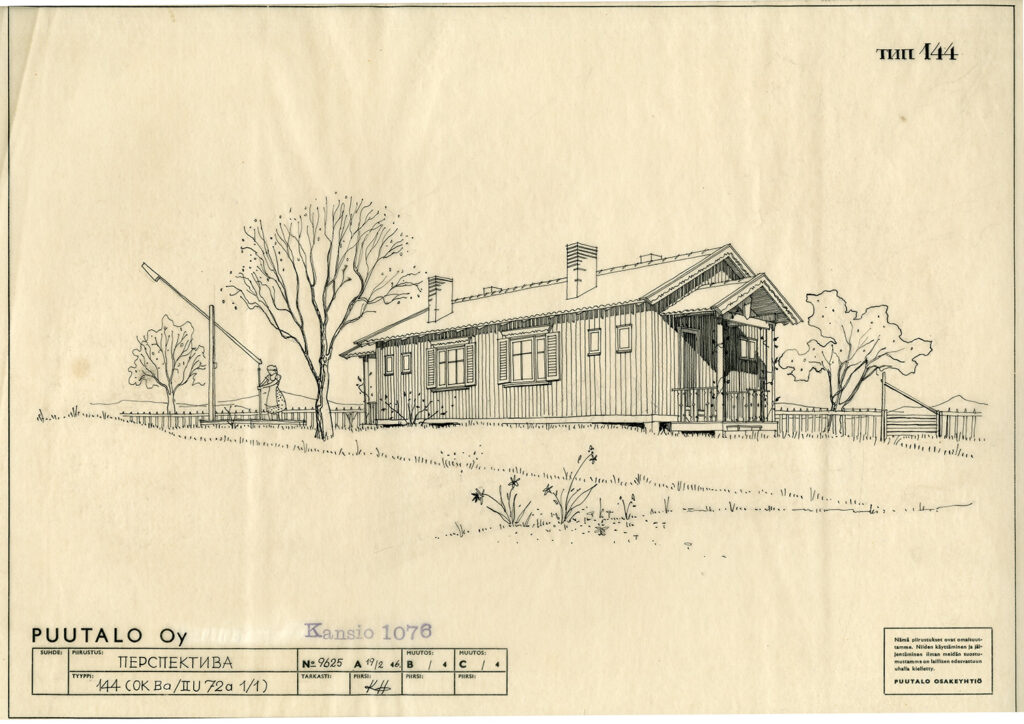
Originally, the houses built for export were identical to those sold in the domestic market, but soon these models were modified in accordance with Soviet specifications. Whereas buildings for the Finnish market were based on functionalist ideals and sparse ornamentation, Soviet models were designed with a more traditional appearance and more decorative facades. In addition, the plans of these export models made it possible to use the buildings communally between several families.
Modes of exchange – houses, steel and lard
After the war, other European countries began to import wooden houses from Finland as part of their own reconstruction efforts. Due to the prevailing shortage of hard currency, international trade was largely based on various forms of countertrade. In each case, the aim was to keep the level of exports and imports approximately equal, even as the quantities of specific products varied. These frameworks required close cooperation between governments and private companies to manage trade agreements.
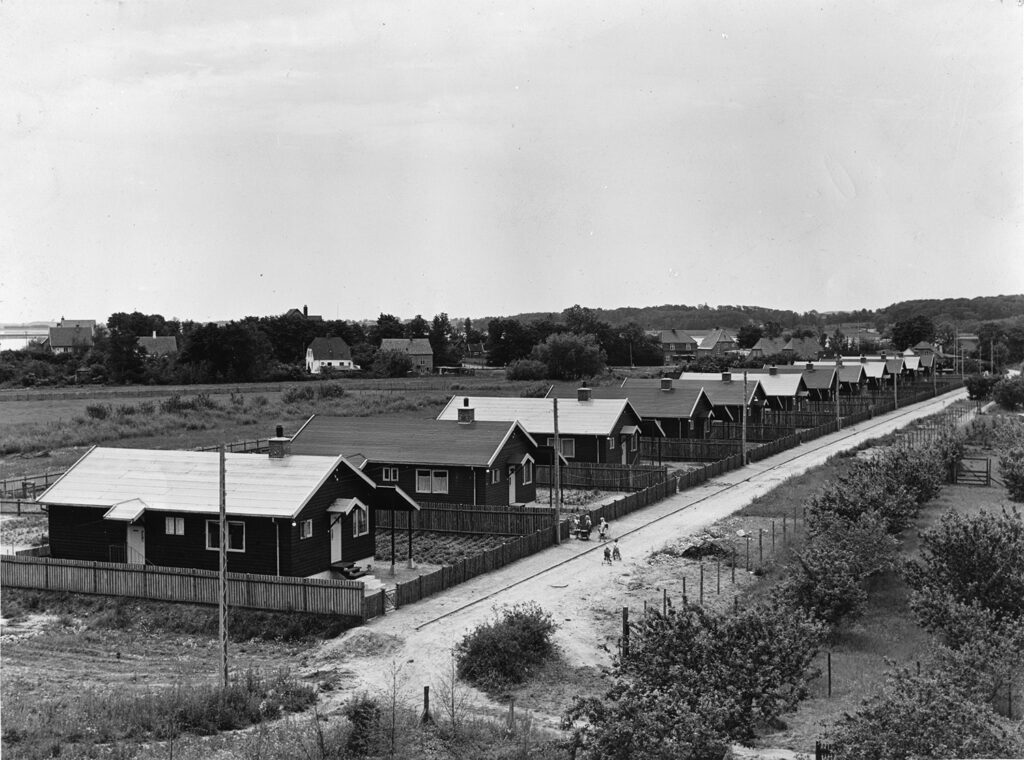
For example, in March 1947, the governments of Finland and Poland signed a $ 20 million agreement in which Finland would import 495,000 tons of coal in return for 4,000 wooden houses, as well as cellulose, copper supplies, machinery and construction panels. On the basis of similar agreements, Finland was able to import coal, iron, steel and tractors from the United Kingdom, beef, lard, butter and cheese from Denmark, wine and silk from France, potatoes, chemicals and textiles from the Netherlands and grapes and oranges from Israel.
Sales operations were soon directed to all continents, and by the end of the 1940s, Finnish wooden houses had been erected from Australia to Argentina, and from Cameroon to Iceland.
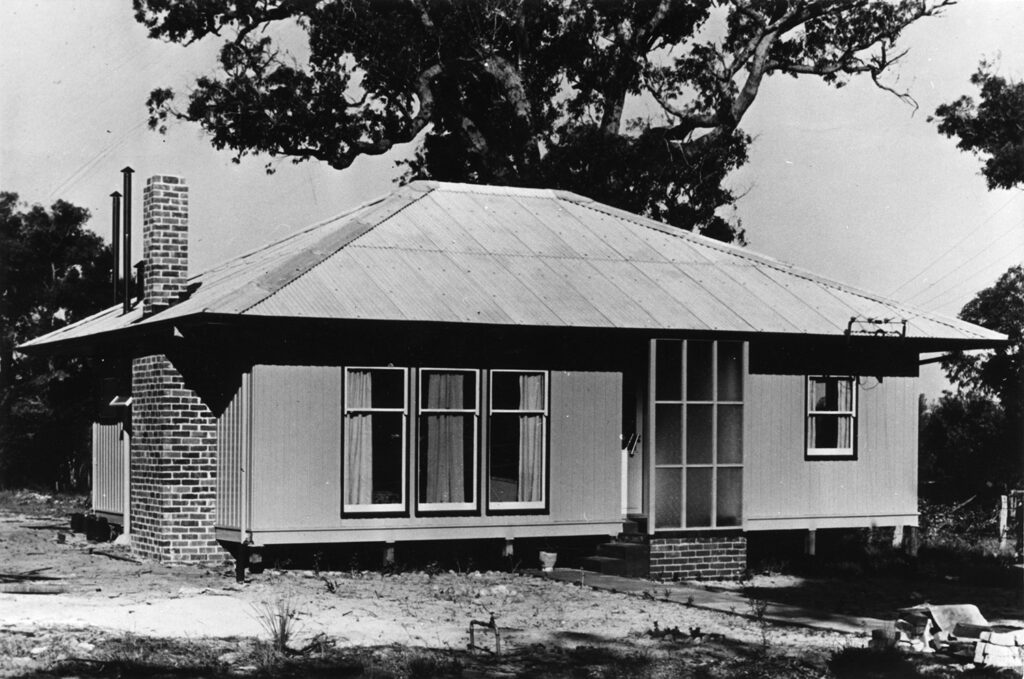
Adventure’s end
The United States represented the most attractive and most challenging market opportunity for Finnish housing producers as the rapid growth of American suburbs created an enormous demand for single-family houses. However, the competition in this market was fierce, and despite years of effort, Puutalo never achieved the breakthrough that it sought in North America.
In spite of this limited success, the US government remained interested in supporting the Finnish wood construction industry for its own political objectives. In 1955, an opportunity presented itself when the Soviet Union unexpectedly announced that it would end future orders. The sudden withdrawal devastated the industry and pushed the production of wooden houses in Finland to the brink of extinction. Disaster was avoided only with the support of the US Military, which ordered a large number of barracks for its bases in Pakistan and Iran. In addition, with help from the US, two housing areas were built in West Berlin to provide housing for East German refugees.
In spite of the American orders, the reprieve was only temporary. By the mid-1950s, the entire industry was forced to reorganise and total production was reduced to a fraction of what it had been in the years before. Those factories that remained in the industry redirected their operations and began at last to produce homes for the domestic market.
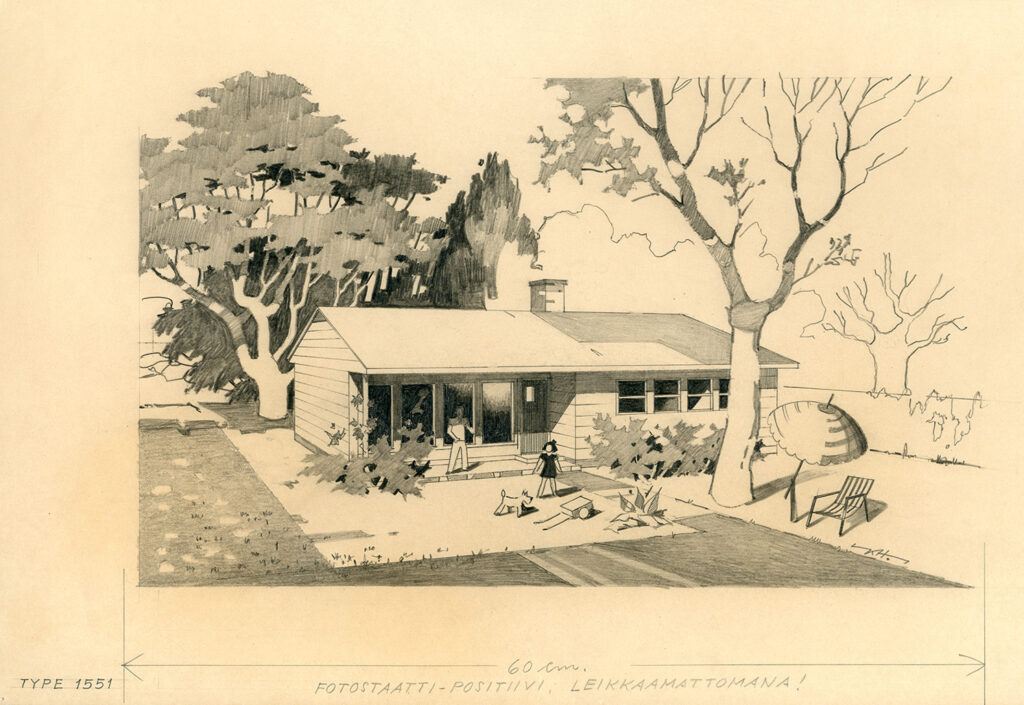
Finnish houses out in the world
Thousands of buildings produced by Puutalo remain in use across the globe. Intriguingly, the national origins of these homes are still known in many places. The modest wooden structures are referred to, for instance, as Finnenhaus in German, Finnhus in Danish, Domki fińskie in Polish, and Finskiy domchik in Russian.
Today, a renewed interest in the buildings can be seen across many of these locations as a new generation of inhabitants takes ownership of the houses. Although many of the buildings and neighbourhoods were built as temporary solutions for a pressing crisis, they have lasted surprisingly well. As compact, adaptable and efficiently planned homes with high material quality, the houses appeal to contemporary dwellers, just as they did 80 years ago when the first residents moved in.
All images © Central Archives for Finnish Business Records (ELKA)
Read more about the Puutalo corporation on Archinfo Finland’s website through this link.


